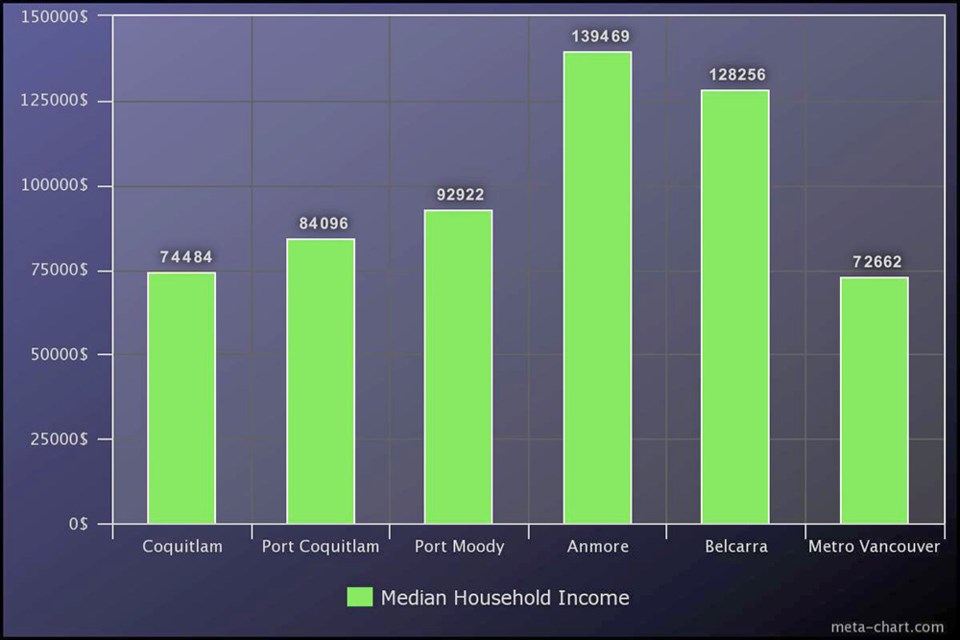Household incomes have increased in the Tri-Cities over the last five years and continue to stay above the Metro Vancouver average, according to recently released census data.
In Coquitlam, for example, the median household income in 2015 was $74,484, meaning half of the city’s households earn less than that and the other half more. The total is 9.9% higher than the $67,787 calculated in 2010.
Sharper increases were seen in Port Moody, which rose 16.3% from $79,918 in 2010 to $92,922 in 2015; and Port Coquitlam, which increased 15.9% from $72,563 in 2010 to $84,096 during the same period.
“I think you are seeing more families moving out this way,” said Michael Hind, the CEO of the Tri-Cities Chamber of Commerce. “The migration to the suburbs is ongoing, which brings people with higher paying jobs.”
The data shows that PoCo and Port Moody have kept pace with the growth in earnings seen across the region while Coquitlam has fallen slightly behind the Metro Vancouver average increase of 14.7%. In 2010, the median Metro household income was $63,347, rising to $72,662 in the last five years.
How the incomes are distributed depends on the municipality, the data shows.
In Coquitlam, for example, 17.9% of all households earned $30,000 or less while in Port Coquitlam, the number was 12.8% and in Port Moody, it was 11.9%. Across the region, the figure is 19%.
The proportion of households earning between $60,000 and $89,999 was 18.2% in Coquitlam, 20.3% in Port Coquitlam and 18.5% in Port Moody, compared to the Metro Vancouver average of 18.8%.
But while many in the Tri-Cities aren’t far off the average, a few are well above it.
A significant percentage of local residents reported household incomes of $150,000 or more. Across Metro Vancouver, 16.7% of residents fall into that high-income category while in Coquitlam the percentage is 17.6%, in Port Coquitlam, it’s 17.2% and in Port Moody, 23.4% are above that mark. (As well, 44.6% of households in the village of Anmore topped that mark, a slightly higher percentage than in neighbouring Belcarra.)
Hind said overall, the economy in the Tri-Cities is strong, mirroring a similar situation across the region and the province.
“It is the move to the suburbs and the economy that I think is contributing to [the increases],” Hind told The Tri-City News. “I think the economy in B.C. is doing well.”
Across Canada, median household income grew 10.8% over the last decade, rising from $63,457 to $70,336.
According to a report from Statistics Canada, the resource and manufacturing sectors were key drivers in improving the earnings of residents. But the document noted that much of the census data was accumulated in 2015, before the impact of the oil price slowdown was fully felt.
@gmckennaTC



